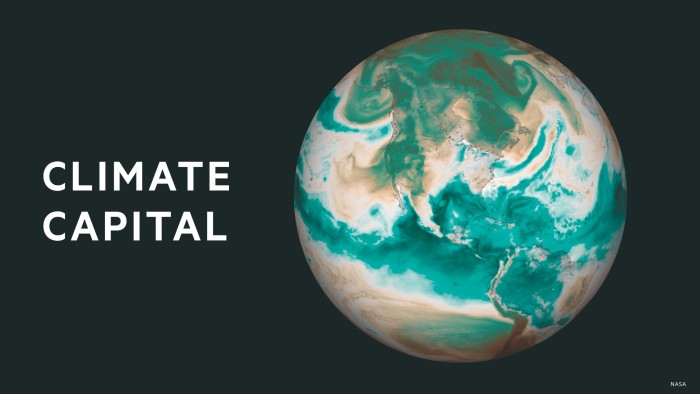Unlock the Editor’s Digest for free
Roula Khalaf, Editor of the FT, selects her favourite stories in this weekly newsletter.
Hurricanes, fires and other disasters caused $320bn in losses in 2024, or about a third more than the year before, highlighting the toll taken by climate change and property development in areas hit by extreme weather, the world’s largest reinsurance group said.
About $140bn of these losses were covered by insurance, Munich Re reported on Thursday, making last year the most expensive for the industry since 2017 when the hurricane trio of Harvey, Irma and Maria struck the US.
While the 40 per cent of economic losses which were insured was higher than the historical average of about 30 per cent, this still left a large “protection gap”.
Facing high payouts, insurers have retreated from some of the most exposed markets.
Rates for property and casualty insurance have soared, meanwhile, helping to offset rising payouts for insurers.
This means that 2024 was a “digestible” year for the sector despite the soaring claims, said David Flandro, head of industry analysis at Howden’s reinsurance broking arm.
About two-thirds of the global total losses last year occurred in North America, as well as Central America and the Caribbean, amounting to $190bn. This was a higher share than usual mainly because of hurricanes Milton and Helene that hit Florida within two weeks of each other.
With the rise in global average temperature since pre-industrial times exceeding 1.5C for the first time, fuelling extreme weather events, 2024 is expected to be confirmed by scientists as the hottest on record.
In addition to so-called peak perils such as hurricanes, relatively smaller hazards such as thunderstorms “are now causing cumulative damage equivalent to a severe hurricane”, Munich Re said.
The report pointed to thunderstorms, accompanied by tornadoes, that pummelled the US midwest and Texas early last year, causing total losses of almost $13bn alone.
The US’s heavy concentration of valuable real estate and infrastructure, combined with the frequency of hurricanes, thunderstorms and other hazards, helped explain its large share of global economic losses, said Tobias Grimm, head of climate advisory at Munich Re.
“Whenever there is a new wind storm or flood, that naturally causes more losses than 30 or 50 years ago, because there are just more assets, new suburbs, new holiday villages,” Grimm said. “That is the key driver of increasing losses. And on top of that, we see climate change playing in more and more.”
In south-east Asia, Typhoon Yagi slammed into the south coast of China and Vietnam in September, making it the most powerful cyclone to hit the latter since systematic local record-keeping there began, Munich Re said.
It caused losses of $14bn, of which just $1.6bn were insured, and had the highest death toll of any natural disaster last year, killing about 850 people.
After fatalities had soared to 77,600 as a result of earthquakes in Turkey and Syria in 2023, global fatalities were lower in 2024. About 11,000 people died as a result of natural disasters, Munich Re said, compared with an average of 17,500 over the past 10 years.
Climate Capital

Where climate change meets business, markets and politics. Explore the FT’s coverage here.
Are you curious about the FT’s environmental sustainability commitments? Find out more about our science-based targets here











